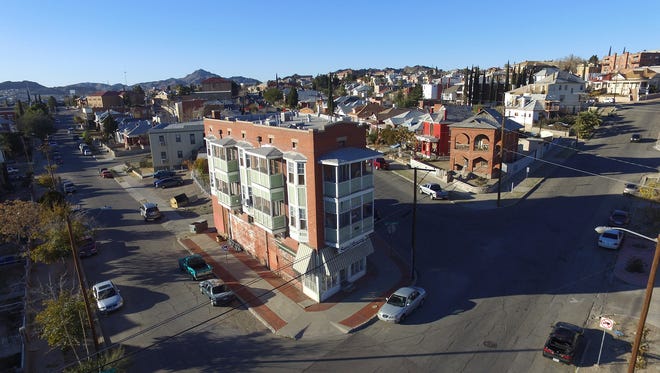Options for $1 billion Downtown I-10 Trench project must be explored: Sito Negron

You may have heard about the I-10 Trench project proposed by the Texas Department of Transportation. Part of the Reimagine I-10 study series, this piece in and around Downtown might be the largest transportation project ever in El Paso, at a cost of more than $1 billion. The project proposes to:
• Widen the “Trench” (the sunken portion of Interstate 10 that passes through Downtown), replace the surface, and create adjacent access roads, which will require taking property, some historic, between Yandell Drive and I-10.
• Reconfigure the on- and off-ramps to Downtown and widen the I-10 approaches to the Trench, starting from the east around the Spaghetti Bowl and west around Executive Center Boulevard.
• Remove the bridges that connect to the community north of Downtown, and replace them with two larger bridges.
• Reconfigure the streets — such as Mesa, Kansas, Oregon and others — that connect the community north of I-10 to Downtown and its adjacent neighborhoods.
More:El Paso's Montana Avenue to become six-lane freeway with TxDOT's $370 million project
The project would rival and perhaps exceed the Border West Expressway in scope, complexity and impact. Reconstruction of I-10 from Dallas Street to Executive will clog I-10 traffic for years, change the face of Downtown, and alter how the city — especially neighborhoods of the urban core, from Mission Hills to Kern Place to Rio Grande to Five Points — connects to Downtown.
This presents an opportunity. If the Trench is covered, it becomes a tunnel. The top, or cap, becomes usable space that reconnects Downtown to the neighborhoods north of it. Elsewhere, such as in Dallas, the cap is a park. The catch is, it has to be paid for locally, at a cost of hundreds of millions of dollars.
Before I-10 disrupted the city core, El Paso had a traditional hierarchy of urban scale. The tallest buildings — offices and hotels — were clustered in the blocks around a focal point, in this case the plaza. Further out were apartments, then suburbs.
More:Sunset Heights Tour of Homes
For example, the San Francisco neighborhood, west of Downtown and south of the highway, is made up mostly of apartment buildings, facing Sunset Heights, one of the city's original suburbs, on other side of I-10. It’s hard to imagine the scale of removal to make way for I-10, U.S. 54, and other infrastructure in Central El Paso.
This project also contemplates removal, which is concerning. We want to restore urban fabric, not further rend it. But the proposal calls for taking two apartment buildings, at least one of which is historic — the iconic Pearl Apartments, with the Sunset Heights mural adding vibrancy and color for thousands of travelers daily; the Holocaust Museum; and the rest of the row of properties along Yandell adjacent to the Trench.
The Trench road surface must be rebuilt, regardless of whether or not the highway is widened. Providing relief routes around the city — such as I-10 Connect over Lincoln Park, and the Borderland Expressway, formerly known as the Northeast Bypass — are essential before the Trench can be addressed.
Want more columns like this? Click here to subscribe to elpasotimes.com
Decision-makers and stakeholders at the local and state level must ask hard questions about not only the opportunities but also the timeline and need before we carve yet another slice out of the heart of the city. Imagine the effect of years of major closure in the heart of the city? Would simply resurfacing the Trench be far more cost-effective and faster? Could we cap it without widening and taking properties?
With new technology for vehicles and traffic management on the horizon, we should explore every alternative before committing to a project that will shape the center of the city, and Downtown, for generations. Frankly, if we’re going to do that, we should ask the question of whether nonlocal traffic can be rerouted completely, via I-10 Connect and the Borderland Expressway, and the highway turned into a boulevard system for local traffic, reclaiming urban space for parks, buildings, and neighborhoods.
That would be visionary and truly put El Paso on the global map.
TXDOT is doing what it does best, planning a highway project. But we are looking at it as a community project and do not believe widening I-10 is the only road before us. Every option must be transparently, thoroughly explored.
Sito Negron is president of the Sunset Heights Neighborhood Improvement Association.